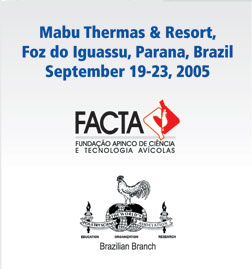Progress in
the development of stable transfection in Eimeria
tenella
Julie
Clark and Fiona Tomley
Institute for Animal Health, Compton.
Many practical difficulties
have to be overcome to develop transfection techniques
for Eimeria tenella because these parasites do not
invade and develop in vitro with sufficiently high
efficiencies to allow the screening for or propagation
of transfected parasites. Recently we have made significant
progress in (1) the efficiency of electroporation
and transient transfection of E. tenella; (2) the
development of more reliable methods for infecting
chickens with electroporated sporozoites; and (3)
the administration of drugs to establish an effective
selection barrier in vivo.
In addition,
we have for the first time expressed successfully
at a high level the fluorescent marker protein YFP
within E. tenella. These advances mean that we can
now dose chickens with significant numbers of potentially
transfected parasites, select progeny oocysts with
an effective drug barrier and FACs sort these parasites
before re-propagating them in vivo. Using these approaches
stable integration of YFP into the E. tenella genome
has been achieved.
